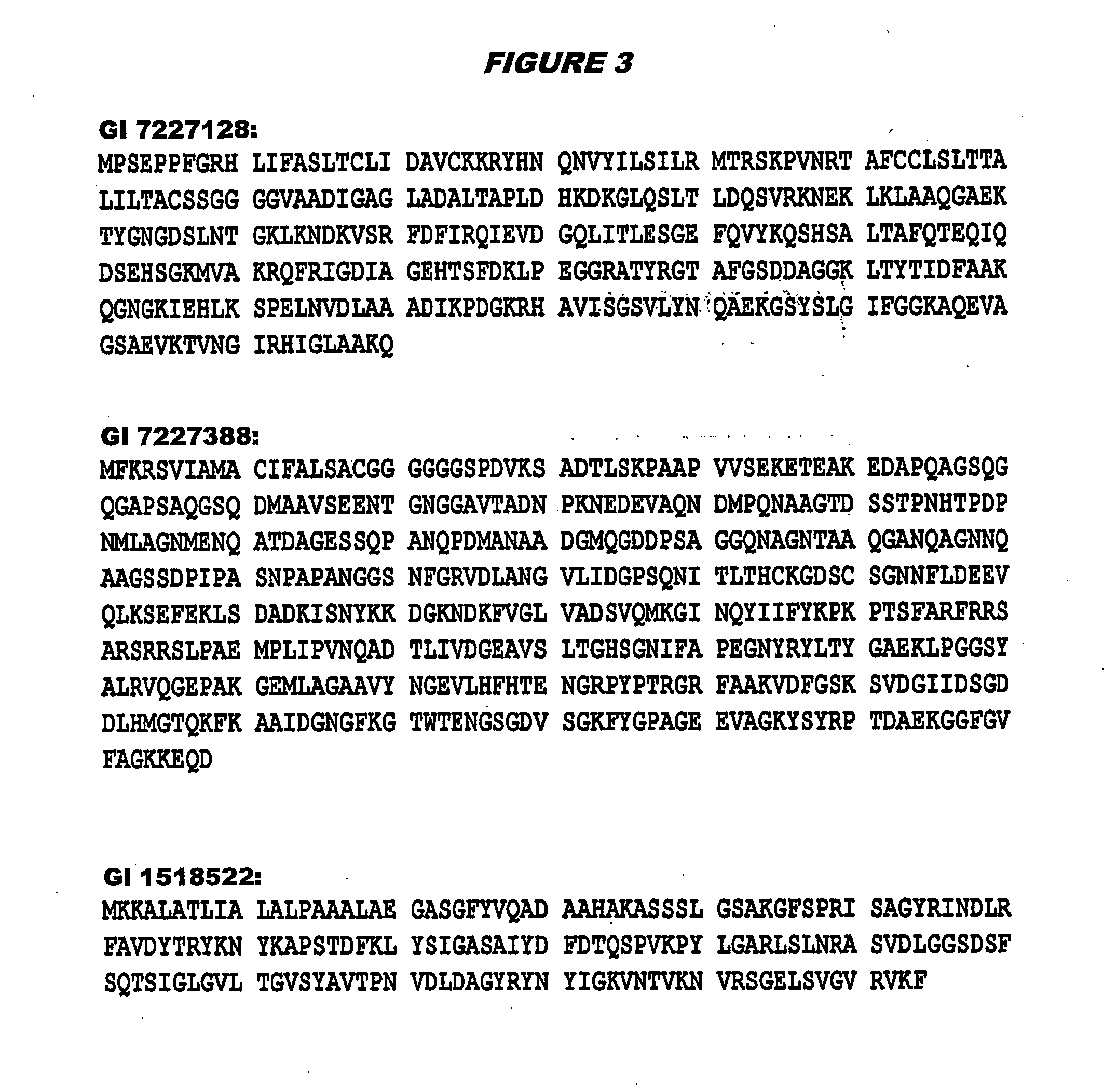Bacterial outer membrane vesicles
a technology of outer membrane and vesicles, which is applied in the direction of antibacterial agents, antibody medical ingredients, immunological disorders, etc., can solve the problems of limited efficacy and absence of important protective antigens, and achieve the effect of enhancing the efficacy of the other and preventing meningococcal diseas
- Summary
- Abstract
- Description
- Claims
- Application Information
AI Technical Summary
Benefits of technology
Problems solved by technology
Method used
Image
Examples
Embodiment Construction
OMV Preparation
[0103]OMVs were prepared either by the prior art ‘Norwegian’ methods (strains 114476 and 39498) or by the following process (strain MC58):[0104]Bacteria from 2-5 plates were harvested into 10 ml of 10 mM Tris-HCl buffer (pH 8,0) and heat-killed at 56° C. for 45 min. The samples were then sonicated on ice (duty cycle 50 for 10 minutes with the tip at 67) to disrupt membranes.[0105]Cellular debris was removed by centrifugation at 5000 g for 30 minutes at 4° C., or 10000 g for 10 minutes.[0106]The supernatant was re-centrifuged at 50000 g for 75 minutes at 4° C.[0107]The pellet was resuspended in 7 ml of 2% N-lauroyl sarcosinate (Sarkosyl) in 10 mM Tris-HCl (pH 80) for 20 minutes at room temperature to solubilise the cytoplasmic membranes.[0108]The sample was centrifuged at 10000 g for 10 minutes to remove particulates and the supernatant was centrifuged at 75000 g for 75 minutes at 4° C. The sample was washed in 10 mM Tris-HCl (pH 8.0) and centrifuged at 75000 g for 75 ...
PUM
| Property | Measurement | Unit |
|---|---|---|
| pore-size | aaaaa | aaaaa |
| diameter | aaaaa | aaaaa |
| diameter | aaaaa | aaaaa |
Abstract
Description
Claims
Application Information
 Login to View More
Login to View More - R&D
- Intellectual Property
- Life Sciences
- Materials
- Tech Scout
- Unparalleled Data Quality
- Higher Quality Content
- 60% Fewer Hallucinations
Browse by: Latest US Patents, China's latest patents, Technical Efficacy Thesaurus, Application Domain, Technology Topic, Popular Technical Reports.
© 2025 PatSnap. All rights reserved.Legal|Privacy policy|Modern Slavery Act Transparency Statement|Sitemap|About US| Contact US: help@patsnap.com


